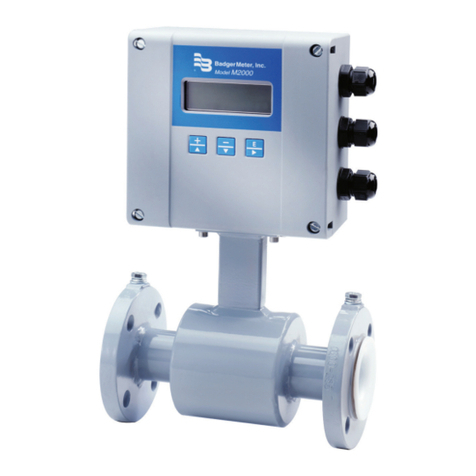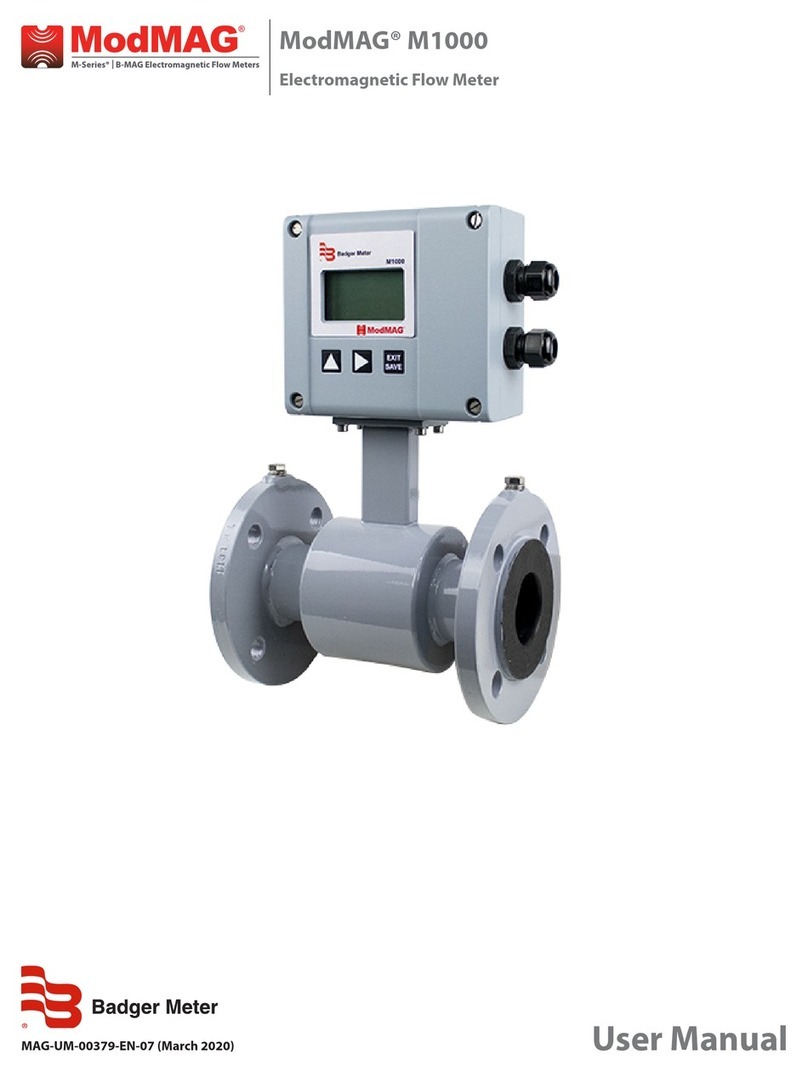
Additional Information
Certification markings are noted on the product label. Markings include:
Class I, Zone 2, AEx/ nA ia IIC T3
FM
APPROVED
-20 C < Tamb < +50 C
Provides intrinsically safe electrode circuits
Ex nA ia IIC T3
CLII Div2 GP FG T3
Suitable for CLI Div2 GP ABCD T3
Type 4X/6P/IP66/IP67
Power: 85-240 VAC/50-60 Hz/15VA
Tag #:........................
Serial #:....................
Model #: 3000...........
M SERIES MAG METER
®
Badger Meter Brno Czech Republic
!
Warning - Substitution of components may impair Instrinsic Safety
Exia
Class I, Zone 2, AEx/ nA [ia] IIC T3
FM
APPROVED
FM CONTROL DWG [Exia] CSA CONTROL DWG
MAG-AS-00801-EN MAG-AS-00801-EN
-20 C < Tamb < +50 C
Provides intrinsically safe electrode circuits
Ex nA [ia] IIC T3
CLII Div2 GP FG T3
Suitable for CLI Div2 GP ABCD T3
Type 4X/6P/IP66/IP67
Power: 85-240 VAC/50-60 Hz/15VA
Tag #:........................
Serial #:....................
Model #: 3000...........
M SERIES MAG METER
®
Badger Meter Brno Czech Republic
!
Warning - Substitution of components may impair Instrinsic Safety
Figure 4: Mounted amplifier 85…240V AC Figure 5: Remote mount 85…240V AC
Class I, Zone 2, AEx/ nA ia IIC T3
FM
APPROVED
-20 C < Tamb < +50 C
Provides intrinsically safe electrode circuits
Ex nA ia IIC T3
CLII Div2 GP FG T3
Suitable for CLI Div2 GP ABCD T3
Type 4X/6P/IP66/IP67
Power: 24 VDC/5W
Tag #:........................
Serial #:....................
Model #: 3000...........
M SERIES MAG METER
®
Badger Meter Brno Czech Republic
!
Warning - Substitution of components may impair Instrinsic Safety
Exia Class I, Zone 2, AEx/ nA [ia] IIC T3
FM
APPROVED
FM CONTROL DWG [Exia] CSA CONTROL DWG
MAG-AS-00801-EN MAG-AS-00801-EN
-20 C < Tamb < +50 C
Provides intrinsically safe electrode circuits
Ex nA [ia] IIC T3
CLII Div2 GP FG T3
Suitable for CLI Div2 GP ABCD T3
Type 4X/6P/IP66/IP67
Power: 24 VDC/5W
Tag #:........................
Serial #:....................
Model #: 3000...........
M SERIES MAG METER
®
Badger Meter Brno Czech Republic
!
Warning - Substitution of components may impair Instrinsic Safety
Figure 6: Mounted amplifier 24V DC Figure 7: Remote mount 24V DC
OTE:N Table 1 below refers to the data plate codes per the configured meter order. The data plate code string follows the
model number on the data plate.
A = Mounting Type M Meter mount
R Remote mount
B = Liner Material R Hard rubber
T PTFE
C = Electrodes
H Alloy C
S 316 stainless steel
G Gold/platinum
T Tantalum
R Platinum/rhodium
D = End Flange D DIN flange
S SAE flange
E = Entry M Metric
N NPT
F = Number of Electrodes T Three
F Four
G = Detector Size (DN Size MM) 6, 8, 10, 15 and so on
H = Voltage H 110/220V AC
L 24V DC
Table 1: Data plate codes
Contact Badger Meter for information on the dimensions of the flameproof joints.
For additional information regarding importation, equipment installation, equipment repair, equipment return or renewal
parts, contact:
Badger Meter, Inc.
P.O. Box 245036
Milwaukee, WI 53222
Telephone: (414) 355-0400 or (800) 876-3837
On the Web: www.badgermeter.com or contact your local Badger Meter representative.
Safety Precautions and Instructions
MAG-UM-00158-EN-07Page 8 June 2018

































